The Rocky Mountains hold some of the best Trout fishing in the world. High mountain peaks receive snowpack throughout the winter, delivering cold water to streams, lakes, and river valleys throughout the year. So, it’s no surprise, then, that the Centennial State is absolutely loaded with great fishing. Top on the list in these productive waterways is a range of Trout. But what makes Trout fishing in Colorado so special?

As a former guide in Colorado, I’ll try to paint you a picture in the next few sections. I’ll also let you in on some tips for a successful trip. By the time you’re done reading, you should understand the allure of Trout fishing in this slice of paradise! Are you an angler itching to uncover Colorado’s rich waters? Read on before to start planning your trip.
Why go Trout fishing in Colorado?
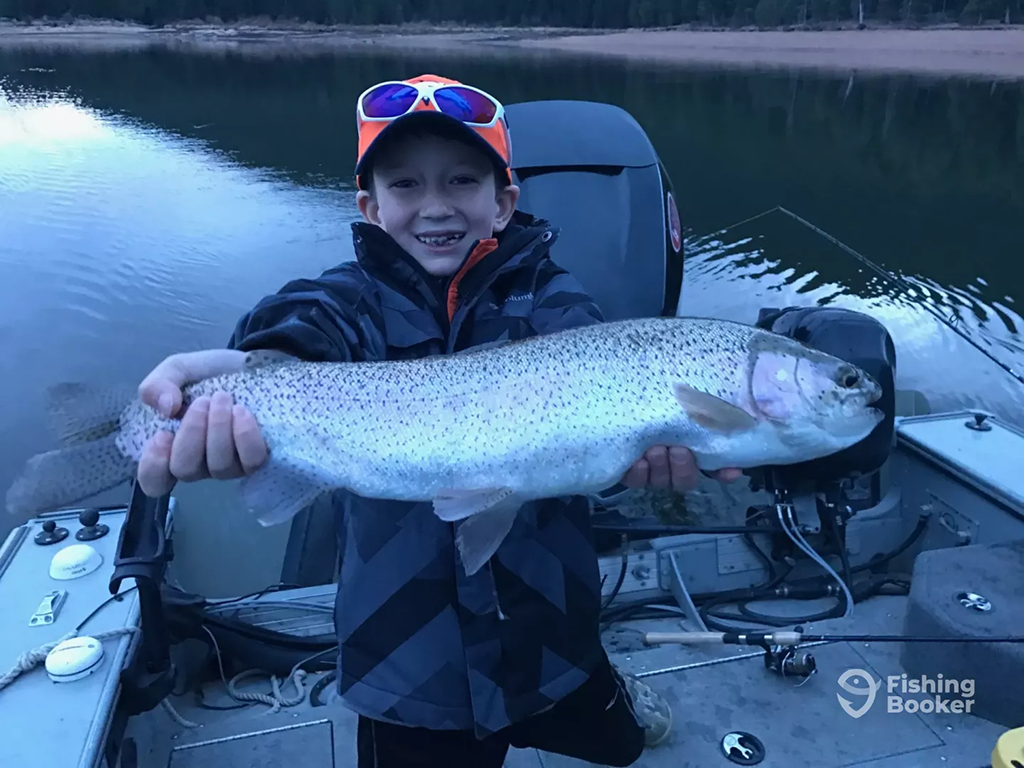
Abundant Trout populations and diverse water types make Colorado an attractive state to fish in. You can find backcountry Cutthroat Trout that will smash dry flies all day long, along with tailwater fisheries with highly selective (and very large) Trout that require perfect presentations.
Whether you’re fishing a remote creek or a big river below a dam, Colorado is always scenic and interesting. The small towns are friendly and the towering 14,000-foot peaks never get old. Outside of the general charm and large tracts of public lands, it’s a great place to chase Trout.
I also love Colorado for the camping opportunities next to prime fishing grounds. It’s rarely hard to find a great campground with water right out the tent door! The ability to fish all day and have a nice campfire after makes this state a bucket-list destination.
Popular Trout Species in Colorado
There are a few notable Trout species in Colorado. In fact, most of the country’s top-prized Trout swim here. Take a look below to see what makes each stand out.
And before you shout! Yes, you’ll probably notice Lake Trout missing from this list. However, while Colorado has amazing Lake Trout fisheries, they’re actually a type of Char, not a Trout. So for the purpose of this list, I’ve stuck to actual Trout.
Rainbow Trout
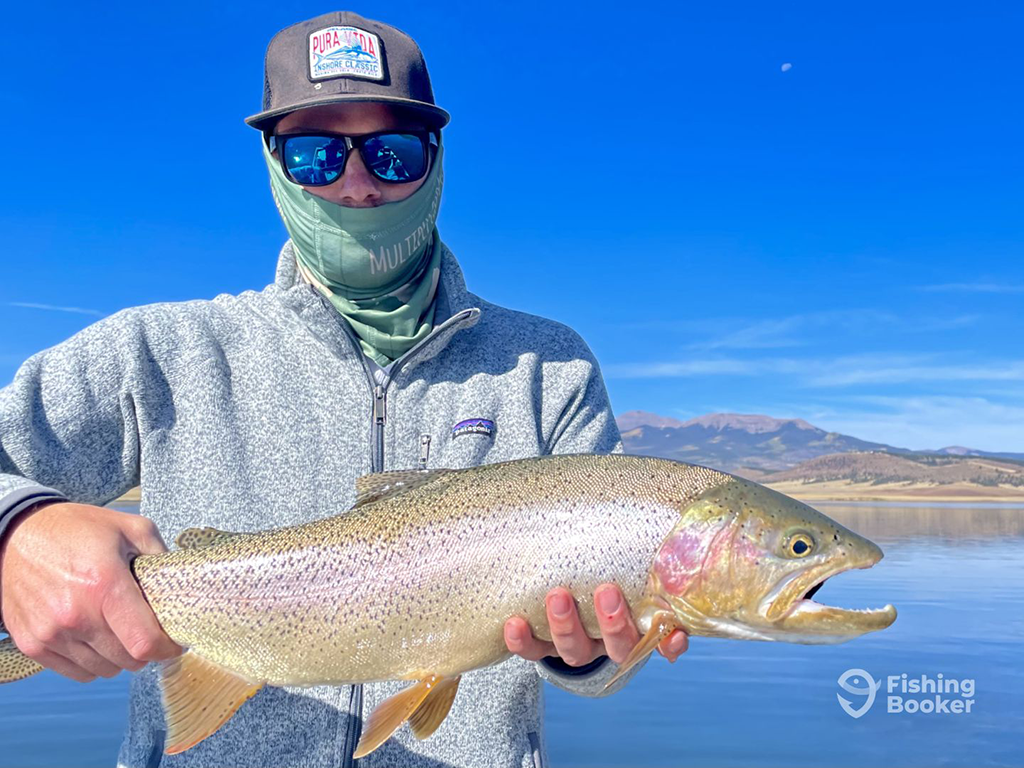
There’s excellent Rainbow Trout fishing across the west but Colorado boasts some very unique opportunities. In several tailwater fisheries, the Rainbows grow in excess of 10 pounds. Mysis shrimp spill through the dams, creating an ultra-rich ecosystem where Trout can grow rapidly. These places are no secret and the fishing is technical, but it’s also very rewarding. You’ll also find these fish throughout the many rivers and lakes in the region as well.
Brown Trout

Everyone loves Brown Trout and Colorado is no exception. The same tailwater fisheries grow massive Browns but, for some reason, the Rainbow Trout populations are stronger. Brown Trout are prolific in most river valleys, however, and they also grow large in lakes and reservoirs. Some of the largest Browns are caught in the fall when they migrate from deep reservoirs into river systems before spawning.
Cutthroat Trout

Quite a few varieties of Cutthroats swim in Colorado’s waters. Many are native and some, like the Snake River Cutthroat, are the product of introductions and stocking. The Rio Grande Cutthroat is a staple in the southwest of the state, while Colorado River Cutthroats are also common. Greenback Cutthroats are less common but are revered for their pure genetic strains.
Brook Trout

Many of the backcountry streams and beaver ponds, such as Beaver Creek, are full of small Brook Trout. You can keep a pile of Brookies in most places, so bring a skillet to camp and cook a few up. While they’re small in most streams and lakes, a few places break the rules and grow huge Brook Trout. A record fish over 8 pounds was caught in Southwest Colorado in 2022!
Tiger Trout
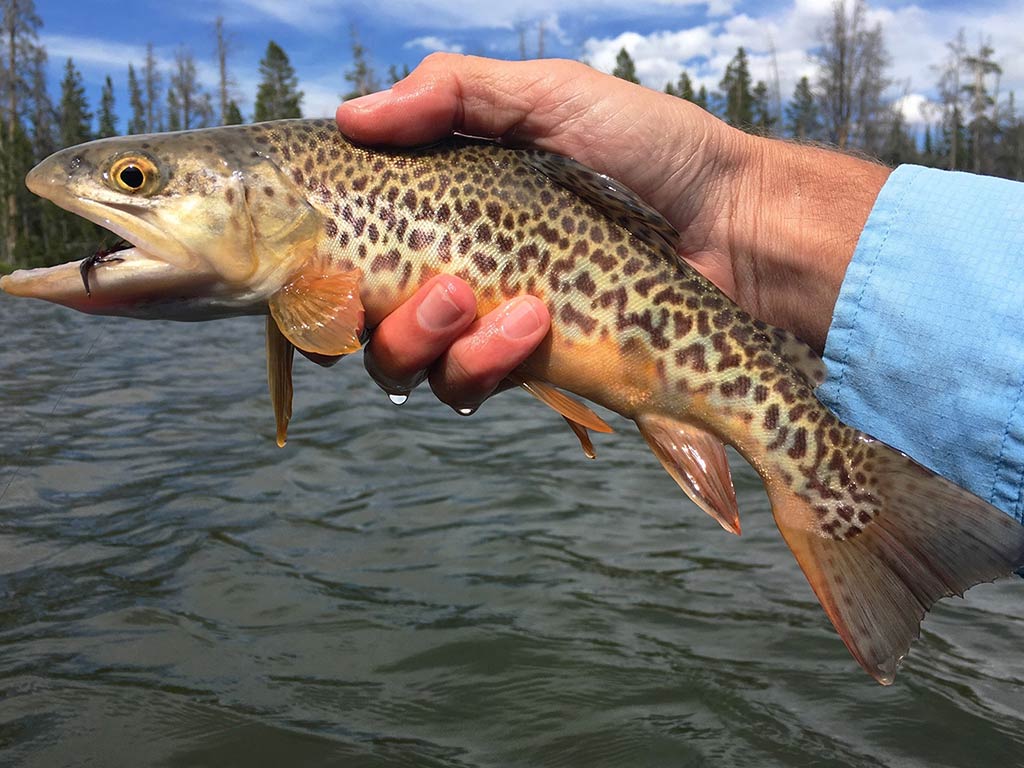
On the less common side, anglers can also find Tiger Trout in the Centennial State. Most of these fish are reared in hatcheries and are stocked, but they can occur in the wild too. Tiger Trout are a cross between Brook and Brown Trout. Colorado has numerous waters where both species are present, making it possible for them to crossbreed as both are fall spawners.
How to Go Trout Fishing in Colorado
There are a few important things to know before going Trout fishing in Colorado. You can catch Trout on the fly or on spin fishing tackle – which I’ll cover in a second – but there are also some ins and outs you need to know about.
Know Where You Stand
Unlike Montana and other areas in the west, Colorado allows private landowners to own streambeds. This means river bottoms are private through private property. Anglers must pay close attention to boundaries to avoid trespassing. Most rivers are well labeled along the boundaries to avoid confusion but it’s good to be aware beforehand. Fishing-specific phone apps can help as well.
Colorado Trout Fishing Techniques
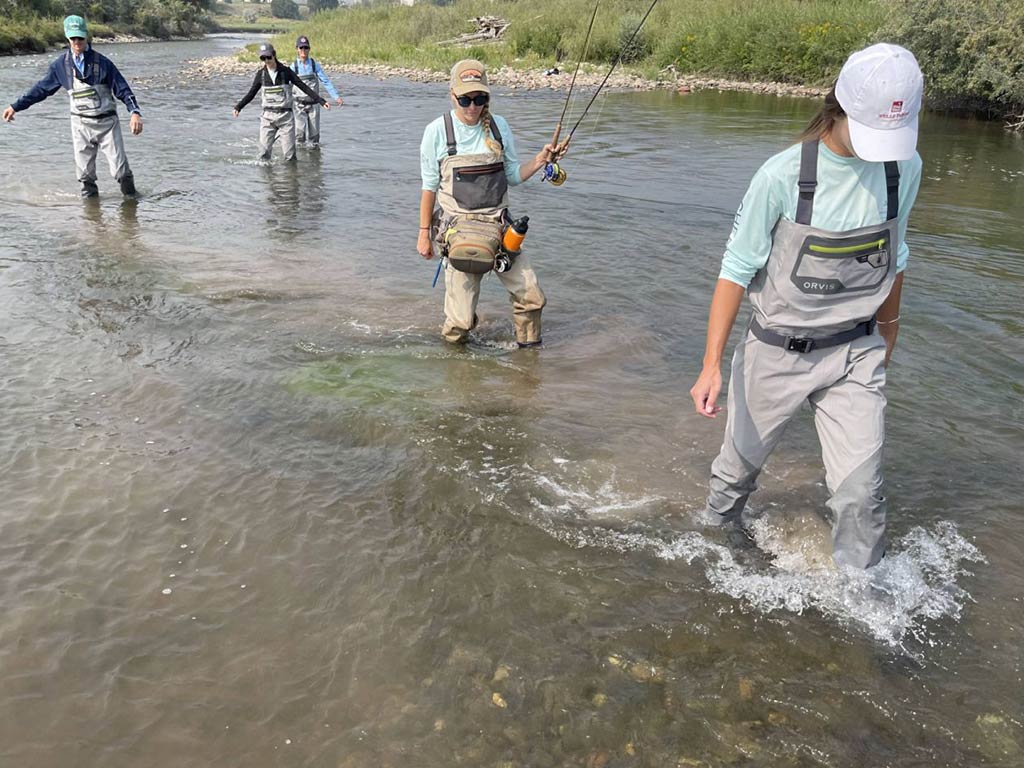
I mentioned you can go fly or spin fishing for Trout in Colorado, so let’s break it down. Just beware that some sections of rivers only allow fly fishing with barbless hooks. Others allow for fly and spin fishing with artificial lures and baits, as well.
- Fly Fishing. Using attractor dry flies and general nymphs works on most mountain streams and low-pressure waters. If you hit the tailwaters and high-pressure areas, bring small flies to imitate blue-wing olive mayflies and various midges, tricos, and other tricky bigs.
- Spin Fishing. Using cut and live bait in reservoirs and other designated waters is a great way to find big fish. Always check the regulations because baits aren’t legal in many rivers and lakes. You can also use lures just about everywhere with fly-only waters being the exception. A Rapala or spinner is ideal for Trout fishing in Colorado. There’s a single-hook requirement in some places but you can always remove treble hooks from lures to comply with this rule.
Where to Chase Trout in Colorado
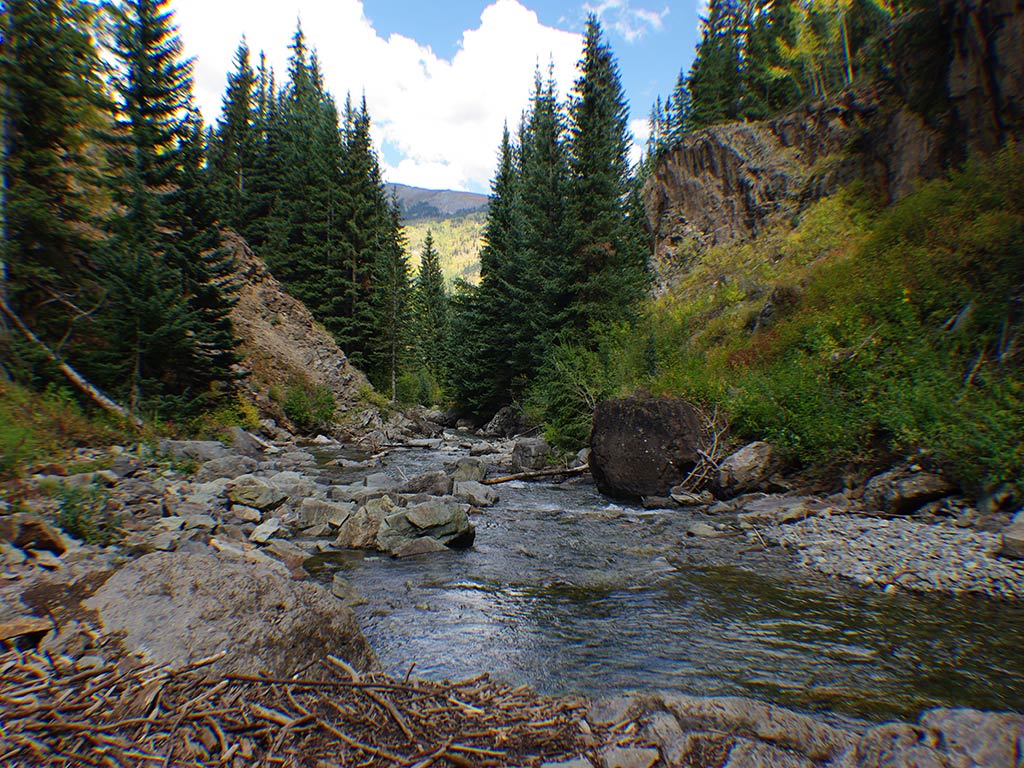
The list of places to fish is long and the Colorado Parks and Wildlife department actually offers great guides to many of the best rivers and lakes. Gold-medal waters are designated for especially productive and valued waters, so if you see a sign, it’s likely a popular but also world-class fishery.
The following are a few regions and towns to get started on your search for the best Trout fishing in Colorado:
- South Platte River. Likely the most famous river system in Colorado, this complex network offers a mix of dam-fed tailwaters and productive reservoirs. Fishing above and below Antero and Spinney Mountain Reservoirs is popular. Cheesman Canyon and the Dream Stream are two of my favorite places to test my fly fishing skills against the selective Trout in the drainage.
- Glenwood Springs. I’m adding this specific town because it’s central to many great waters. The Colorado, Roaring Fork, Crystal, and Frying Pan Rivers are all within easy reach. Throw in the reservoirs and a reasonable drive to the Blue River or all the way to the Gunnison, and you have more than enough options.
- Northern Rockies. This area includes a ton of great fishing, often overlapping with ski towns. Steamboat Springs is a great base camp thanks to the Yampa River tailwater. Craig, Kremmling, Winter Park, and Breckenridge are all great jumping-off points as well. It’s a hot zone of National Forest lands that are rich with cold water.
- Arkansas River. This unique drainage begins near Leadville and runs through stunning canyons before running onto the plains. It’s one of my favorite places for both fishing and whitewater rafting. Salida is central to some of the best waters and it’s a river worth exploring!
- Southwest Colorado. The number of iconic fisheries is long in the southwest of Colorado. The Gunnison River is a favorite and the nearby Taylor River has huge mysis-fed fish. The Animas River in Durango and the entire Montrose area have plenty to explore. It’s a big region geographically with the San Juan Mountains and the lower elevation places like Grand Junction.
Trout Fishing Seasons in Colorado

Trout fishing season lasts year-round in Colorado. I’ve fly fished tailwaters for big Trout even in freezing conditions! The dam release ensures they have open water every month of the year but ice fishing is also popular throughout the winter months.
Spring is very productive just before the runoff hits the rivers. Once water levels rise, fishing becomes more difficult. At this point, I like to hit the lakes because the water is cold and Trout are generally close to shore. Some of the tailwater fisheries will also remain productive throughout high water.
As river flows stabilize, it’s time to hit the rivers hard during summer and fall. Summer fishing is amazing at high elevations, as the water tends to remain cool with great stonefly and caddis hatches. Meanwhile, fall gets big Brown Trout moving and it’s my favorite time to fish big streamers with a more aggressive approach.
Colorado Trout Fishing Regulations
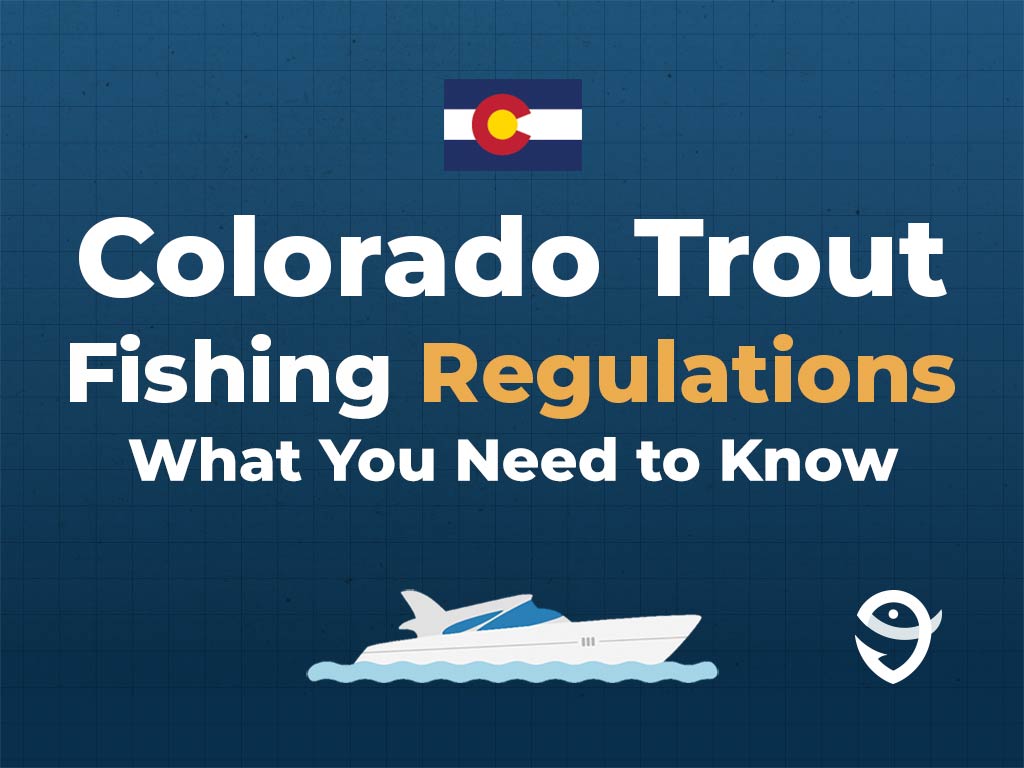
Before I let you go, there’s just some housekeeping you need to be aware of. First of all, as in most states, every angler needs a Colorado fishing license before casting for Trout here. They’re pretty easily obtained, as you can get them online. Make sure to carry a hard or digital copy with you at all times to avoid fines.
You should also have a basic understanding of the regulations surrounding Trout fishing. The state publishes a regulation booklet every year, but the general rule of thumb is that you can keep an aggregate of four Trout per day, with more generous regulations for Brook Trout. These rules are subject to change, however, and various rules can apply on different waters. Check the state’s interactive atlas to see the rules where you’ll be fishing.
Colorado Trout Fishing FAQs
Are you dreaming of trophy Trout in Colorado?
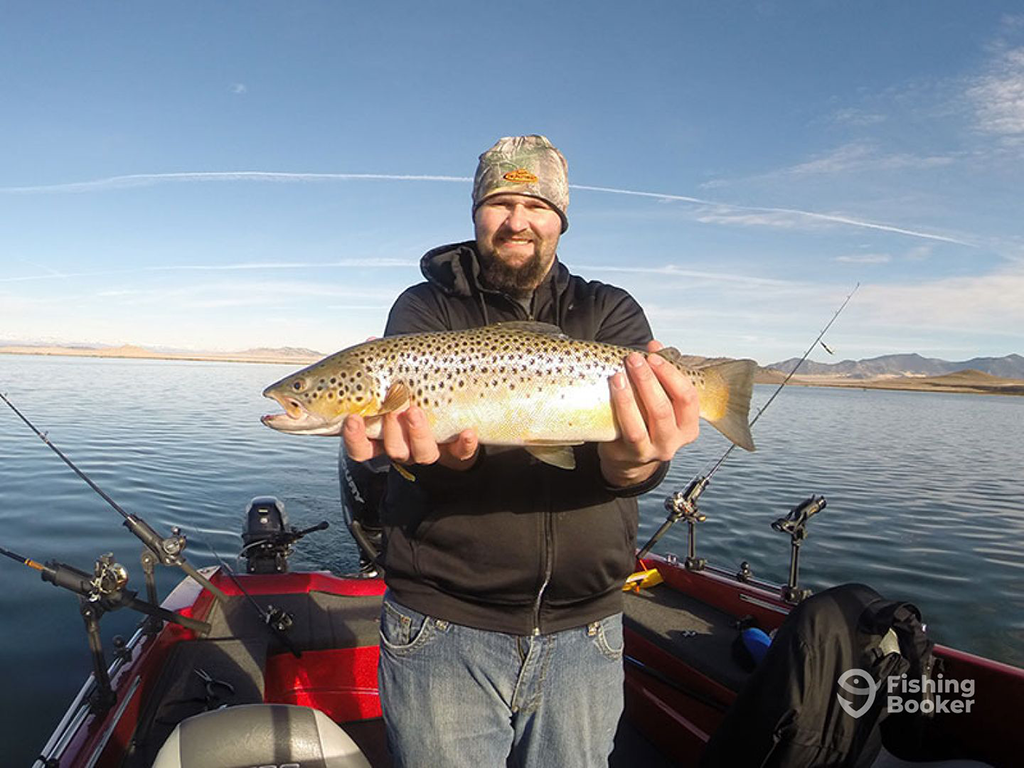
It seems that Colorado puts out more trophy-size Trout than many other states. Maybe it’s the rich tailwater environment or just the general conditions and productive ecosystems. Either way, there’s no shortage of incredible rivers and lakes to pursue native Cutthroats, oversized Rainbows, and many more Trout in general. So hit the road, find a river, and get busy fishing in Colorado!
Are you a guide or local who knows and loves Colorado’s Trout waters? We’d love to hear about your favorite techniques and destinations. Share away in the comments below!


